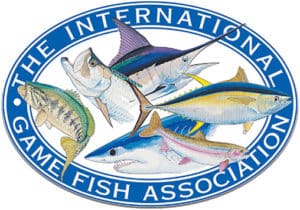Kite fishing is a unique and specialized method of fishing that involves the use of a kite to deploy bait or lures over a body of water. This technique is primarily used in saltwater fishing and is popular for targeting species like sailfish, marlin, tuna, and other pelagic fish. Kite fishing offers several advantages over traditional methods of fishing, such as trolling or casting from a boat, and it has become a preferred method for many anglers, especially in areas where large, offshore species are common. Kite fishing is considered a thrilling and effective method for targeting pelagic fish species, and it requires skill and experience to master.
Recommended Kite Fishing Charters in Costa Rica
Currently there is one fishing charter in our inventory that specializes in kite fishing:

Kite Fishing Key Components and Aspects
- Kite Selection: Choosing the right kite is crucial for successful kite fishing. Kites used in this sport are typically designed to stay aloft in a variety of wind conditions. Popular kite types include delta kites and parafoil kites, with the latter being preferred for their ability to fly in light winds.
- Kite Rigging: Anglers rig the kite with specialized release clips or clips that attach to the fishing line. These clips hold the baited lines and release them when a fish strikes, allowing for a natural presentation of the bait or lure.
- Bait and Lure Presentation: Live baitfish or rigged artificial lures are typically used as bait for kite fishing. The bait is attached to release clips on the kite lines and carefully positioned at various depths to target different parts of the water column. This mimics the natural behavior of prey fish and entices predatory fish to strike.
- Tandem Kite Setup: In many cases, two kites are flown from the same boat, allowing anglers to present baits or lures at different depths and distances from the boat simultaneously. This increases the chances of attracting fish.
- Wind Management: Anglers need to monitor wind conditions closely while kite fishing. The wind speed and direction determine how the kite flies and the angle at which the baited lines are presented. Adjusting the kite’s position and altitude is essential for effective fishing.
- Trolling or Drifting: The boat is typically kept stationary or allowed to drift while kite fishing. This prevents the bait from being dragged unnaturally through the water. Some anglers also combine kite fishing with slow trolling to cover more ground.
- Strike and Hookup: When a fish strikes one of the baited lines, the release clip on the kite line releases the fishing line, allowing the angler to set the hook and begin the fight with the fish.
- Rod and Reel Selection: Heavy-duty fishing tackle is commonly used for kite fishing, as the targeted species are often large and powerful. Rods and reels with high line capacity, strong drag systems, and appropriate line strengths are essential.
- Safety: Safety is paramount when kite fishing. The kite lines can be under high tension, and anglers need to be mindful of the lines and the kite itself to prevent accidents. Proper handling and training are essential.
Advantages of Kite Fishing Over Traditional Fishing Methods
- Natural Presentation: Kite fishing allows for a natural presentation of bait or lures. The baitfish or lures are positioned in the water column at different depths and distances from the boat, mimicking the natural behavior of prey fish. This can be more enticing to predatory fish than other methods where baits are trolled or cast.
- Covering More Ground: Kite fishing allows anglers to cover a larger area of water simultaneously. With multiple lines deployed at varying distances and depths from the boat, you increase your chances of encountering fish. This is particularly advantageous when targeting species that roam over large expanses of open water.
- Reduced Boat Noise and Disturbance: Kite fishing involves keeping the boat relatively stationary or drifting slowly. This reduces the noise and disturbance created by a moving boat, making it less likely to spook skittish or cautious fish.
- Less Risk of Line Tangles: With kite fishing, lines are suspended above the water’s surface, reducing the likelihood of line tangles and snags compared to other methods like trolling or casting.
- Improved Hookup Rate: The use of specialized release clips on the kite lines ensures that the fish has a better chance of taking the bait before feeling the resistance of the fishing line. This often results in a higher hookup rate.
- Greater Fight Experience: Pelagic species targeted in kite fishing are known for their strong and acrobatic fights. Kite fishing provides a thrilling experience as anglers have to battle these powerful fish while they’re still connected to the kite.
- Reduced Fuel Consumption: Since the boat is typically not in constant motion while kite fishing, there’s less fuel consumption compared to other methods like trolling, which can require the engine to run continuously.
- Increased Visual Experience: Kite fishing offers a visual thrill as anglers can watch the kites in the air and the moment when a fish strikes. It adds an exciting dimension to the fishing experience.
- Better for Conservation: Kite fishing can be more selective in targeting specific species and sizes of fish, reducing the likelihood of unintentional bycatch or catching undersized or protected fish. This can contribute to better conservation practices.
- Versatility: Kite fishing can be effective in a wide range of conditions, including areas with strong currents, deep water, or when fish are holding at different depths. Anglers can adjust the kite’s position to adapt to changing conditions.
- Wind strength: When wind is too strong for drone fishing, kite fishing it a great alternative.



